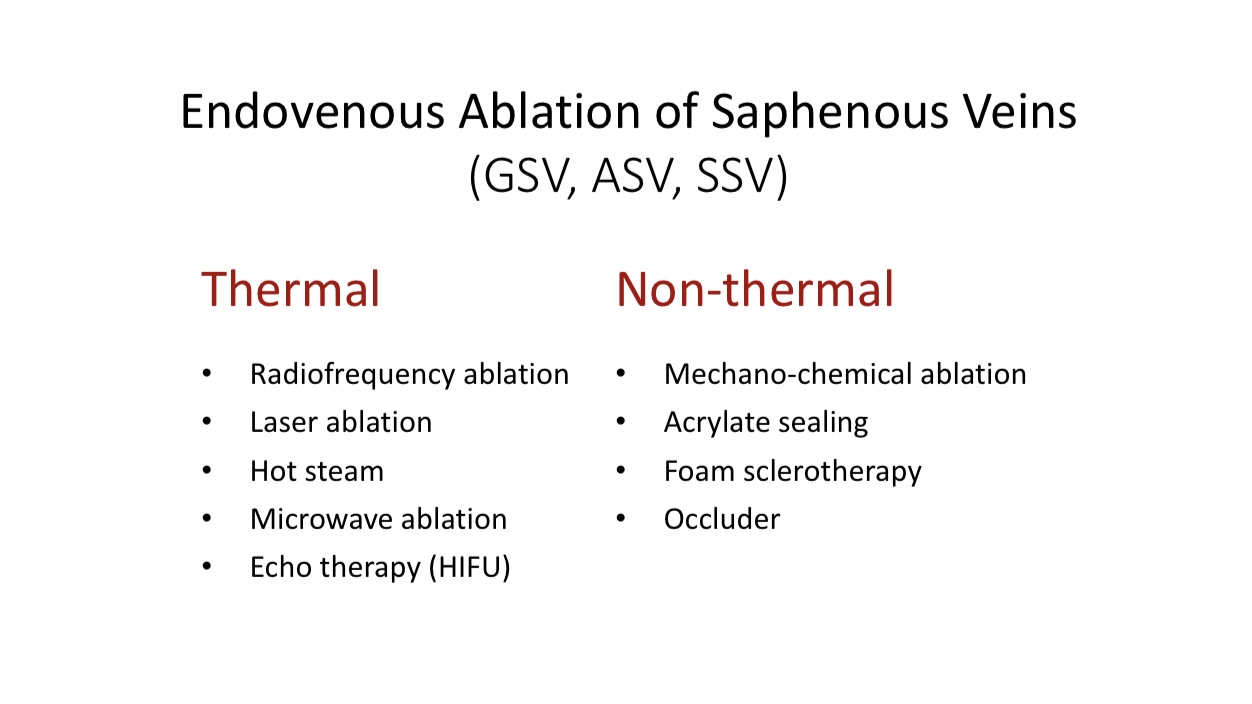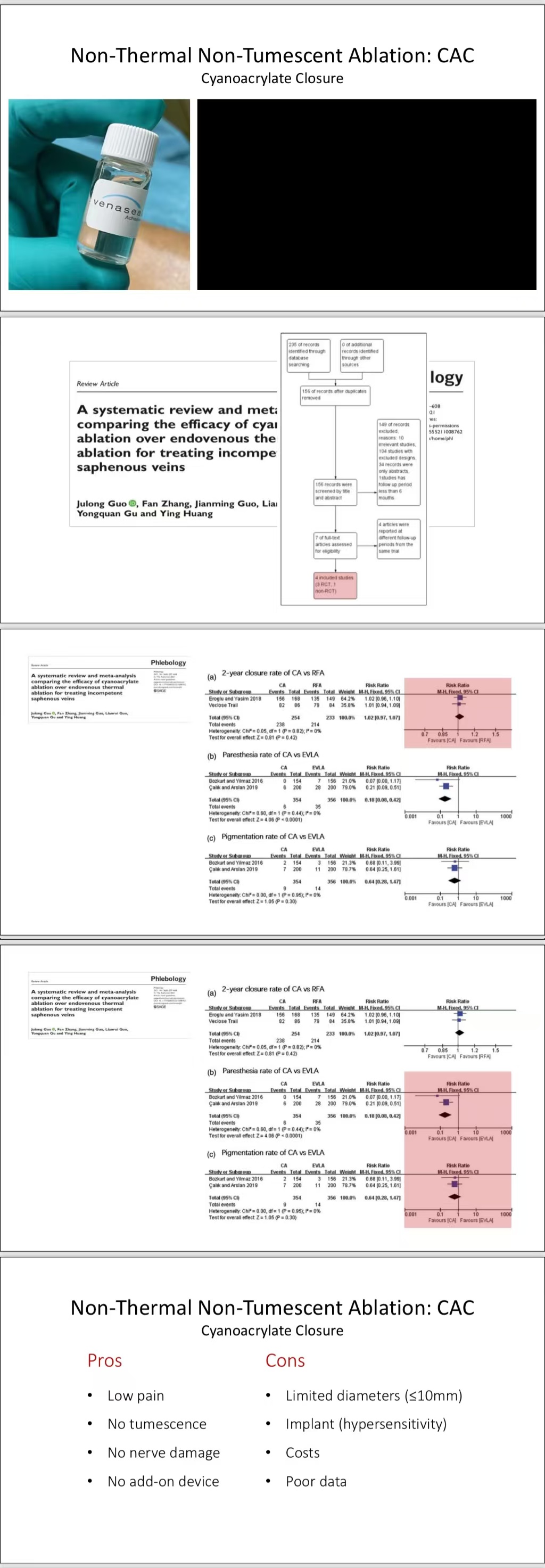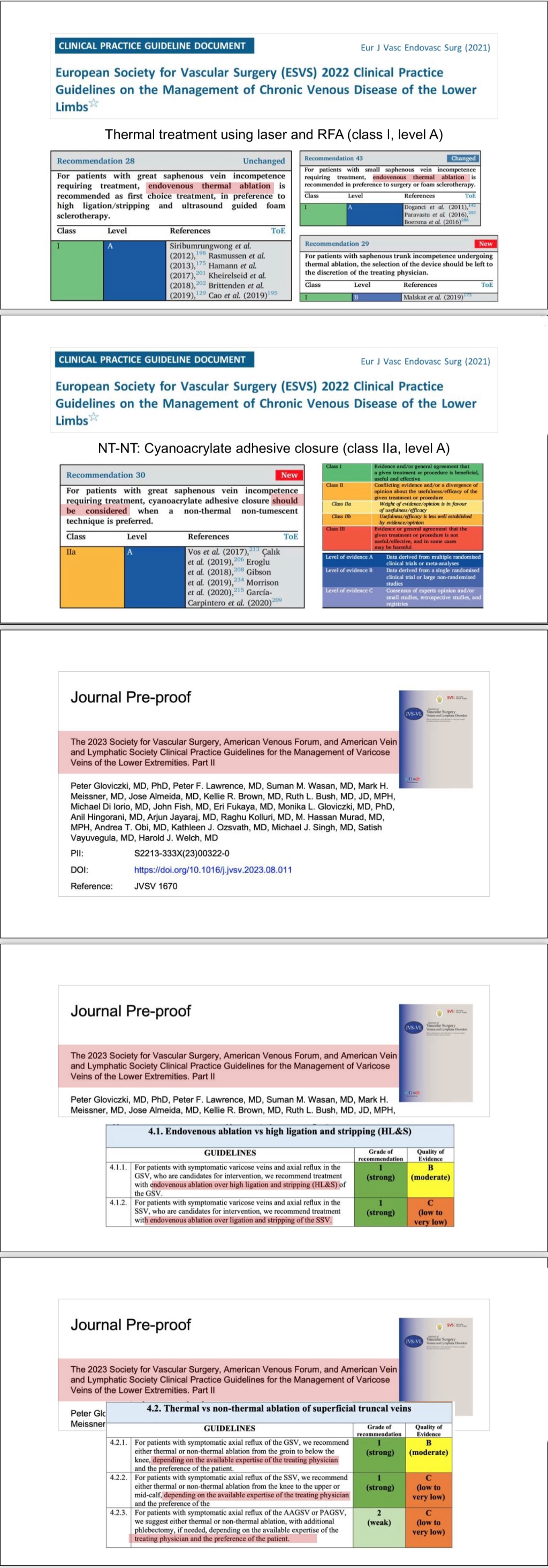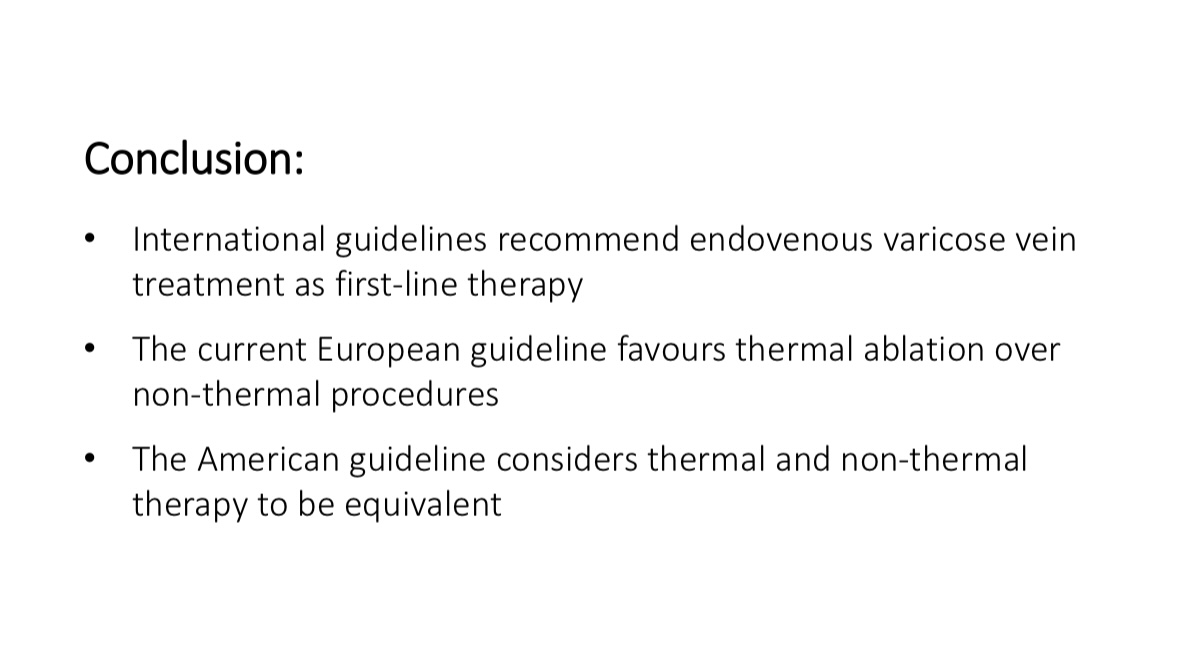Author: Dr. Tobias Hirsch
Institution: Vein Competence Center Halle, Germany
Summary
This presentation highlights the latest treatment options for great saphenous vein (GSV) occlusion, focusing on the advancements in thermal and non-thermal ablation technologies. Dr. Hirsch reviews the evolution of venous treatment techniques from 1900 to 2024, discussing the prospects of thermal ablation (RFA, laser) and non-thermal non-tumescent (NT-NT) methods (mechanochemical ablation, adhesive closure) in vein treatment.
Evolution of Treatment Techniques
•Thermal Ablation: Since their introduction in 1999 and 2000, RFA and endovenous laser treatment (ELT) have remained the mainstay of venous ablation techniques. These technologies boast high closure rates, reaching 99% within 3 months and maintaining 95-96% at 12 months.

•Non-Thermal Non-Tumescent (NT-NT): Recently, new techniques like mechanochemical ablation (MOCA) and cyanoacrylate closure (CAC) have been adopted. Compared to traditional thermal ablation, these methods offer advantages such as low pain and no risk of nerve damage, though they are currently limited by less long-term data and smaller vein diameter applicability.

Clinical Comparison
•Advantages of Thermal Ablation: Techniques like RFA and laser are well-supported by extensive clinical data, making them suitable for larger diameter veins and complex cases. Additionally, laser can be combined with foam sclerotherapy to treat perforating veins.
•Advantages of Non-Thermal Techniques: MOCA and CAC have gained popularity due to their low pain profiles and the lack of need for tumescent anesthesia. These techniques are effective for smaller veins, particularly those less than 8 mm in diameter, but their long-term outcomes are still limited.
Clinical Guideline Recommendations
•International Guidelines: Global guidelines recommend thermal ablation (laser and RFA) as the first-line treatment. European guidelines prioritize thermal techniques, while US guidelines consider both thermal and non-thermal methods equally effective.

Conclusion
1.Thermal ablation techniques (laser and RFA) remain the preferred treatment for GSV occlusion due to their high closure rates and strong clinical support.
2.Non-thermal techniques (MOCA and CAC) offer low-pain alternatives for specific patients, particularly those unsuitable for tumescent anesthesia, though more long-term data is needed to validate their efficacy.
3.Treatment selection should consider vein diameter, symptoms, and clinical data to ensure optimal outcomes.

Contact Us
•Email: endovascluar@simtomax.cn
More international information available at:
•Facebook: Vasco Knight
•Instagram: knight_vasco


